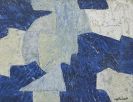
Jakob Jensen
1926 Kopenhagen
The Danish industrial designer Jacob Jensen was born in Copenhagen in 1926. Jacob Jensen attended the Kunsthandvaerkerskolen (Applied Arts School) in Copenhagen until 1952 before working in the practice of the industrial designers Sigvard Bernadotte and Acton Björn from 1952 until 1958. During this period Jacob Jensen was already working for Raymond Loewy in the US; in 1959 Jacob Jensen co-founded a design practice in Chicago with Richard Latham and even taught industrial design at the University of Chicago. In 1961 Jacob Jensen returned to Copenhagen and opened a practice.
From 1964 Jacob Jensen designed hi-fis and radios for Bang & Olufsen, where he became head designer. Jacob Jensen is famous for the Minimalist design of his hi-fis. This elegant design set the aesthetic standards for audio systems design for a long time. With his assistant, David Lewis, Jacob Jensen introduced the linear tuning system, which was inspired by the slide-rule so its appearance suggests the ultimate in precision. In 1969 Jacob Jensen designed the "Beosystem 1200" hi-fi system, with a radio, amplifiers, record player, and taperecorder, which was awarded the Danish ID Prize because it is both revolutionary consumer electronics and a stylish piece of furniture. in 1972 Jacob Jensen designed the "Beogram 4000" record player, with a revolutionary pick-up and stylus. The "Beogram 1800" record player dates from 1975; it is notable for its extremely flat chassis of plastic and brushed aluminium.
Jacob Jensen has also worked as a designer for other firms. One of his 1967 designs was a stainless steel wristwatch for Georg Jensen. In 1972 Jacob Jensen designed the "E76" touch-button telephone for Alcatel-Kirk and, in 1979, an office chair for Labofa.

Would you like to sell a work by Jakob Jensen?
Infos for seller






